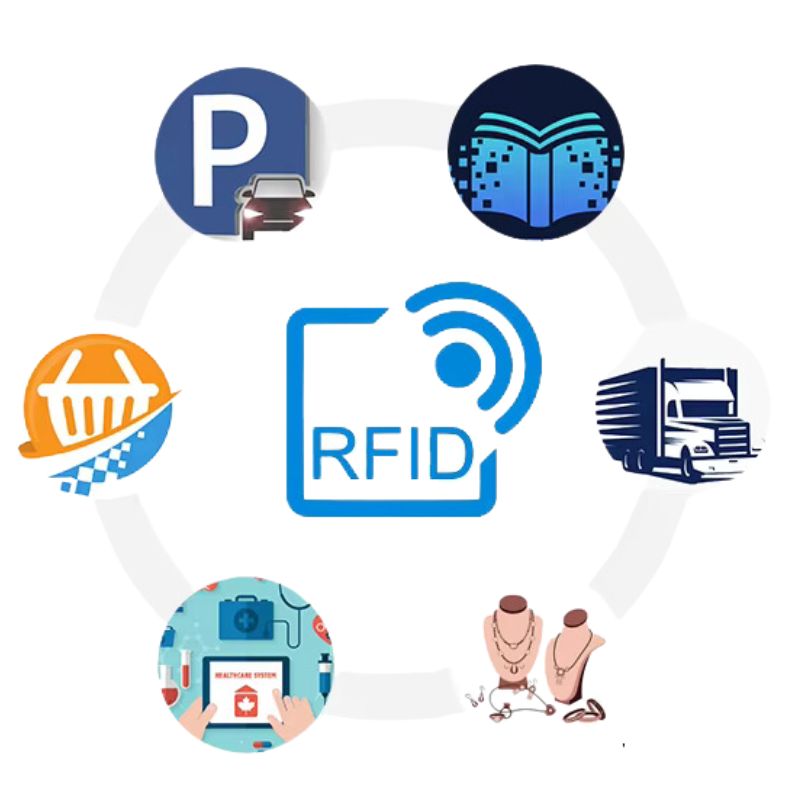
Can RFID Stickers be Tracked?
Table of Contents
RFID Stickers: Revolutionizing Asset Tracking and Location Monitoring
These small but powerful tools use cutting-edge RFID technology to help organizations monitor assets, inventory, and equipment with unparalleled accuracy. This article will uncover how RFID stickers work, their types, and how they can optimize your tracking systems for better operational efficiency.

What Are RFID stickers?
RFID stickers are small devices used for identification and tracking. They communicate with RFID readers using radio frequency identification technology. Each tag contains essential information about the asset it is attached to, such as a serial number or product details.
Key Features:
- Durability: Designed to withstand harsh conditions.
- Versatility: Used in industries like retail, healthcare, and logistics.
- Real-Time Tracking: Enables continuous monitoring of assets.
Tags are often used in systems that require high accuracy and efficiency, making them a staple in modern tracking solutions.
How Do RFID Stickers Work?
The functionality of RFID stickers lies in their ability to communicate wirelessly with an RFID reader.
- Signal Activation: The reader emits radio waves to power the tag.
- Data Transmission: The tag’s antenna captures the signal, and its RFID chip returns stored data.
- Information Capture: The reader collects and processes the transmitted data for analysis.
Unlike barcodes, this process makes RFID stickers work efficiently without requiring a line of sight.
What Are the Different Types of RFID Tags?
There are several types of RFID tags, each suited for specific applications:
Passive RFID Tags
- No Battery: Powered by the reader’s signal.
- Short Range: Effective up to a few meters.
- Applications: Ideal for inventory and asset tracking in warehouses.
Active RFID Tags
- Battery-Powered: Have an internal power source.
- Long Range: Can transmit data over 100 meters.
- Applications: Used for tracking vehicles, large equipment, or personnel.
Choosing the type of RFID sticker depends on your tracking needs and environmental conditions.
How Does RFID Enable Asset Tracking?
RFID tags revolutionize asset tracking by providing seamless, real-time monitoring. Businesses can track assets throughout their lifecycle, ensuring better visibility and control.
Key Advantages:
- Accuracy: Reduces human errors associated with manual tracking.
- Speed: Automates asset identification and updates in seconds.
- Integration: Works with existing tracking systems for enhanced functionality.
Many industries use RFID for logistics, healthcare, and manufacturing applications.
What Is the Difference Between Passive and Active RFID?
Understanding the difference between passive and active RFID is crucial for deploying the right system.
| Feature | Passive RFID | Active RFID |
|---|---|---|
| Power Source | No internal battery | Battery-powered |
| Range | Up to 10 meters | Over 100 meters |
| Cost | Low | Higher |
| Best Use Cases | Inventory tracking, retail | Vehicle tracking, industrial equipment |
Each type offers unique benefits, making them suitable for different RFID applications.
How to Use RFID Stickers for Equipment Tracking?
RFID stickers are indispensable for equipment tracking, especially in industries with high-value assets.
Steps to Implement RFID for Equipment Tracking:
- Tagging Assets: Attach an RFID tag to each piece of equipment.
- Deploying Readers: Install RFID readers at checkpoints for data collection.
- Integrating Software: Asset tracking software is used to monitor and analyze data.
RFID ensures equipment is accounted for, reducing the chances of loss or misplacement.
How RFID Improves Inventory Tracking and Management
Incorporating RFID tracking into inventory management transforms how businesses monitor stock levels.
Key Benefits:
- Real-Time Tracking: Provides instant updates on stock quantities.
- Improved Accuracy: Eliminates discrepancies caused by manual errors.
- Faster Processes: Speeds up inventory audits and restocking.
RFID technology can track inventory at multiple locations simultaneously, making it a game-changer for supply chain efficiency.
Key Benefits of RFID Tracking Systems
Enhanced Efficiency
RFID systems automate processes, saving time and labor costs.
2. Improved Visibility
With real-time tracking, businesses gain better insights into asset movements.
3. Cost Savings
While initial costs are higher, deploying RFID reduces operational expenses in the long run.
4. Versatility
From retail to industrial applications, RFID offers unmatched adaptability.
Applications of RFID stickers in Asset Management
RFID stickers are transforming asset management by enabling organizations to monitor resources easily.
Common Applications:
- Healthcare: Tracking medical equipment and patient records.
- Retail: Monitoring inventory levels and preventing theft.
- Logistics: Ensuring timely delivery of goods by tracking with RFID.
The versatility of RFID technology makes it an invaluable tool across industries.

FAQs About RFID Stickers and Asset Tracking
How do RFID stickers work?
RFID stickers use an antenna and a chip to transmit data to an RFID reader, which captures the information without requiring a line of sight.
What is the difference between passive and active RFID tags?
Passive RFID tags rely on the reader’s signal for power, while active RFID tags have a built-in battery for longer-range tracking.
Can RFID be used for equipment tracking?
Yes, RFID is widely used for tracking equipment in industries like healthcare, manufacturing, and construction.
What are the benefits of RFID tracking systems?
RFID tracking systems improve efficiency, reduce errors, and provide real-time visibility into asset locations.
Comments
Hot Products

What Is RFID Waste Management
Imagine a city where every trash bin speaks — not literally — but through a tiny chip that tells the system when it’s full, when it’s emptied, and where it went. That’s what RFID waste management is doing today.

What are Bolt Seals and their Applications? | Complete Guide
In global trade and logistics, bolt seals play a crucial role in ensuring cargo security and compliance. These small but powerful devices are designed to lock shipping containers, trailers, and cargo doors with a tamper-evident mechanism.

What is an RFID Card Protector? Benefits, Use Cases, and Buying Guide
RFID technology (Radio Frequency Identification) is everywhere: in your credit cards, ID badges, transit passes, hotel room keys, and more. It offers speed and convenience, but it also opens the door to a new kind of digital theft called “skimming.” That’s where an RFID card protector comes in.

RFID Wristbands for Events: Bulk Buying Guide for Organizers
RFID wristbands for events are becoming the go-to solution for organizers who need faster entry, fraud prevention, and cashless payments at concerts, festivals, and sports venues. Unlike paper tickets or QR codes, these smart wristbands use embedded chips to streamline access, secure transactions, and improve the guest experience.

How RFID Tag on Windscreen Improves Vehicle Access Control and Toll Systems
In today’s fast-paced world, vehicle identification needs to be quick, secure, and contactless. An RFID Tag on the Windscreen provides exactly that — a reliable way to manage toll collection, parking, and gated access without stopping vehicles.

The Benefits of RFID Linen Tags in Commercial Laundry
Managing laundry in hospitals, hotels, or large laundry services is a big job. Each day, thousands of sheets, towels, and uniforms are washed, sorted, and sent back out. But problems like lost linens, sorting mistakes, and manual counting can cost companies a lot of money. For example, mid-sized hotels can lose over $200,000 each year from missing linens.
That’s where RFID Linen Tags come in.
Tags
RELATED BLOGS

What Is RFID Waste Management
Imagine a city where every trash bin speaks — not literally — but through a tiny chip that tells the system when it’s full, when it’s emptied, and where it went. That’s what RFID waste management is doing today.

What are Bolt Seals and their Applications? | Complete Guide
In global trade and logistics, bolt seals play a crucial role in ensuring cargo security and compliance. These small but powerful devices are designed to lock shipping containers, trailers, and cargo doors with a tamper-evident mechanism.

What is an RFID Card Protector? Benefits, Use Cases, and Buying Guide
RFID technology (Radio Frequency Identification) is everywhere: in your credit cards, ID badges, transit passes, hotel room keys, and more. It offers speed and convenience, but it also opens the door to a new kind of digital theft called “skimming.” That’s where an RFID card protector comes in.




